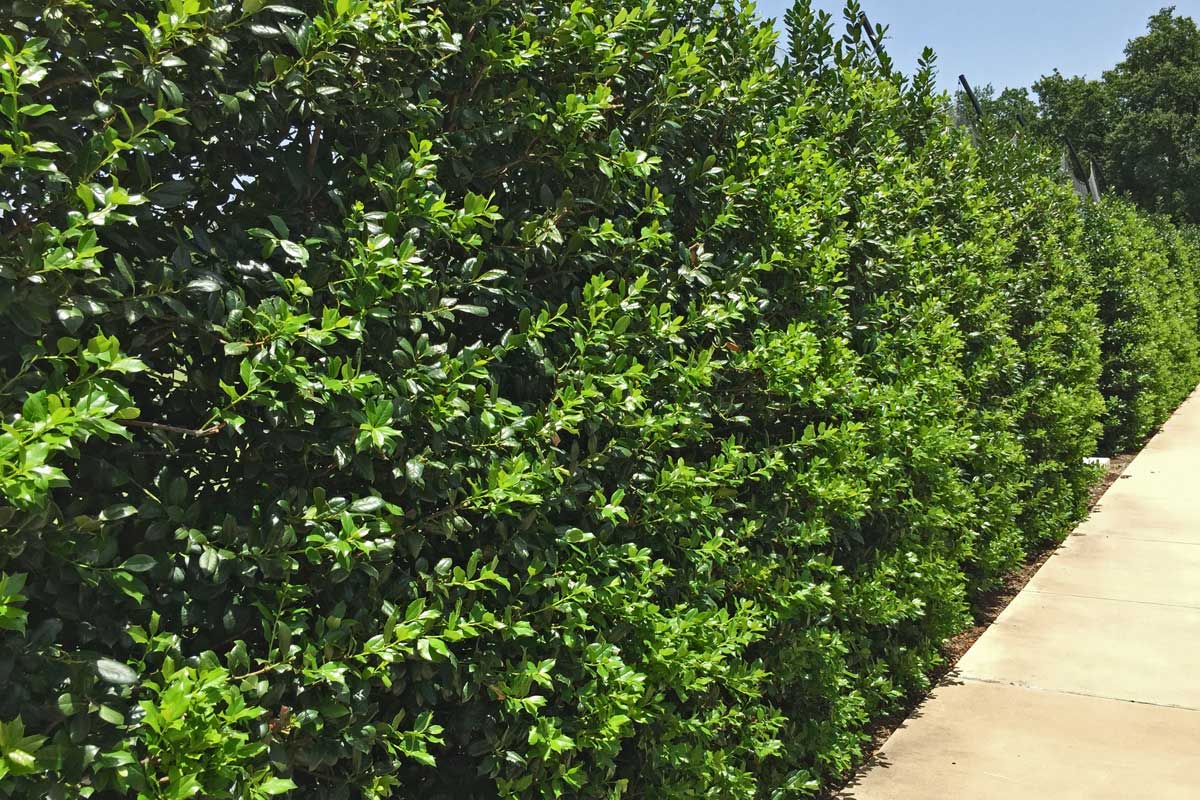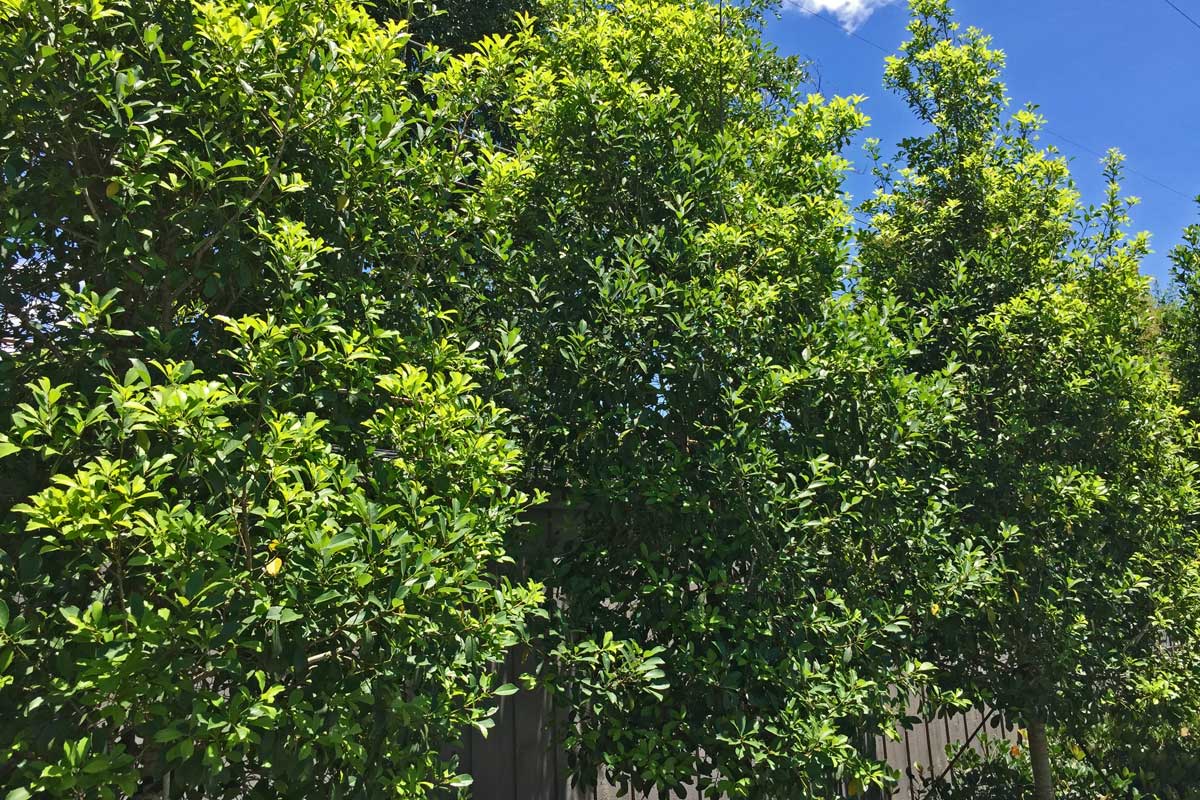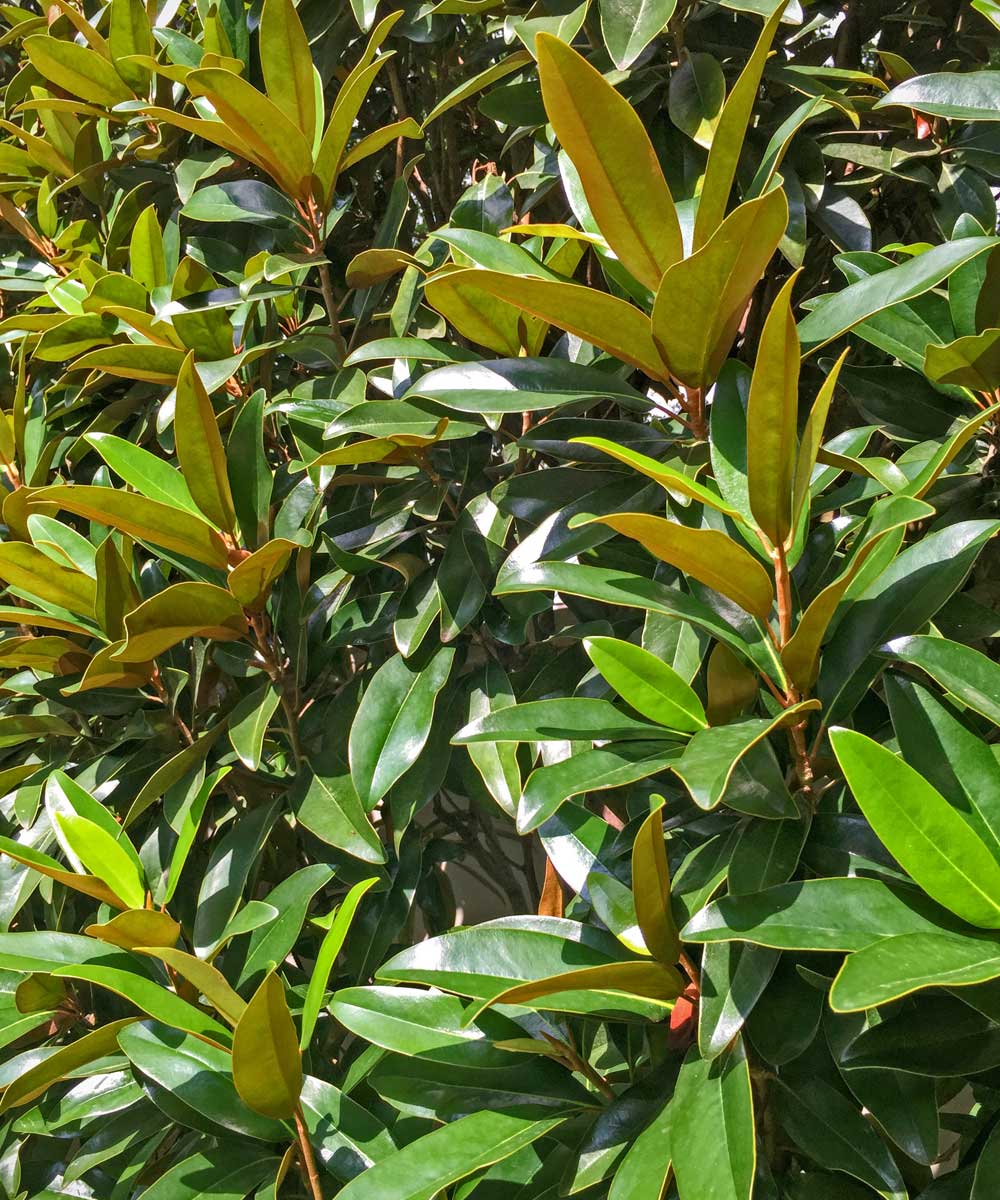Privacy in the garden. It's one of the most frequent requests that homeowners ask for in their landscape design and helps make their garden and property feel like a personal retreat. You've certainly heard the old saying "Good fences make good neighbors", well good hedges make even better neighbors. Fences have limited height restrictions and can't really grow over time, at all. Hedges however, are not height restricted and can grow higher and higher over time to enhance the screening and privacy of your property. This is especially valuable for many of the condensed lot sizes in the Park Cities and the typical suburban homes around Dallas. Whether it is privacy from neighboring houses or screening of an alley or power lines, choosing the right evergreen shrubs and trees for the size and space can make a big difference in the final garden design. Here's a list of 4 of the best plants for privacy screening for your home and garden.
1. Holly - Nellie R. Stevens Holly & Savannah Holly
A nice, clipped Nellie R. Stevens holly hedge along a walkway.
Hollies are some of the most popular screening plants and there dare several varieties to choose from. They can make a great screens in fairly tight spaces and are often some of the most durable plants in the garden.
Nellie R. Stevens Holly (Ilex x 'Nellie R. Stevens) is one of the best plants to use for screening. It has a deep, evergreen color, can be sheared and shaped into a hedge and adds a formal feel to the garden. Nellie R. Stevens holly is very hardy and durable and grows up to 6' wide and up to 20' height at maturity. It is most often used around the perimeter of a property and to enhance privacy along an iron or chainlink fence line.
Pros: Evergreen, dark color, good background screen, durable, can be sheared and clipped.
Cons: Dark green color, needs shearing, no attractive berries or blooms.
Leaves of the Nellie R. Stevens holly.
Savannah Holly (Ilex x 'Savannah Holly') is another holly that is frequently used in the Park Cities to provide privacy along a fence line or property border. Savannah Hollies can be found in both tree form, where the canopies are pruned up to 4-5' above the ground, as well as full to ground versions. The tree form will allow additional shrubs and ground cover to be planted below for additional interest. Savannah Hollies also have clusters of more noticeable red berries to add a little color to the garden. They typically grow in size between 6-10' wide up to 40'' in height which makes them a popular selection for screening between homes and to provide privacy for a swimming pool in the rear garden.
Pros: Tree form can grow up to 40' tall, good screening for tight space, red berries, evergreen.
Cons: Foliage can get thin in very low light situations.
Other holly varieties to consider would be:
- East Palatka Holly (Ilex x attenuata 'East Palatka' - Very similar in look and form to the Savannah Holly.
- Foster's Holly (Ilex x attenuata) - A smaller scale, upright holly with a more dense foliage and small red berries.
- Homefire Holly (Ilex 'Homefire') - Similar in size to the Nellie R. Stevens, but with a lighter green leaf color and different leaf shape.
- Mary Nell Holly (Ilex x 'Mary Nell) - Another upright form Magnolia with a lustrous, green leaf color and texture. Good alternate to Nellie R. Stevens Holly.
2. Magnolia
Magnolias are another popular and effective screening plants to consider for your property. They have a large leaf texture and also have several different varieties to choose from which very in size and color. Be sure to pay attention to the variety you select to the mature form of the tree fits your property and screening application. Just be sure not to use the standard Southern Magnolia for screening at it's mature size and height are way too big.Here are a few of the better varieties to consider:
Little Gem Magnolia (Magnolia grandiflora 'Little Gem' is a popular variety to use for screening with its tight growing and compact form. It makes a good screen along fence lines to obscure unwanted views, has a nice dark green foliage color and also provides the traditional attractive and fragrant white blooms from spring through summer. Grows up to 25 ft. tall and has a spread around 10-12' wide.
D.D. Blanchard Magnolia (Magnolia grandiflora 'D.D. Blanchard') is another, upright growing Magnolia that is good for screening along fences and property lines. D.D. Blanchard grows a little larger that the Little Gem Magnolia and grows up to 45-5' in height and usually requires a spacing of 11-12' although it can be planted tighter if needed.
Other Magnolia varieties to consider would be:
- Bracken's Brown Beauty Magnolia (Magnolia grandiflora 'Bracken's Brown Beauty')
- Claudia Wannamaker Magnolia (Magnolia grandiflora 'Claudia Wannamaker') - Another popular choice for a tall, evergreen screen.
- Alta Magnolia (Magnolia grandiflora 'TMGH' P.P. #11612) - A smaller, more compact variety with a tighter branching pattern and foliage and is a more cold hardy option. Grows slowly to about 20' tall and a spread of 9-10'.
Pros: Large leaf texture, varied color of leaf texture, grow to tall height, fragrant white blooms
Cons: Can get thin and leggy at ground level in very low light situations, some varieties roots can limit planting below.
3. Eastern Red Cedar
Eastern Red Cedars (Juniperus virginiana) is a coniferous evergreen tree and is also a good screening choice and often used as a wind break. Eastern Red Cedars are typically more tolerant poorer soil conditions and provide a dense foliage with light blue berries. They can be planted in both tree form and full to ground forms for full screening efect. Eastern Red Cedars grow from 30-60' tall and with the spread of 12-25'.
4. Photinia
Red Tip Photinia (Photinia x fraseri) has always been a popular and much used choice for hedges and screening for residential properties. Although not planted as frequently by Landscape Architects anymore, it still is an effective and fast growing plant to consider. Growing up to around 20' in height at maturity, Photinia can certainly be found all over Dallas and was a bit over used in the 80's and 90's and fell victim to several severe freezes during this time. It is most noted for it's red tips that develop early in the season and then fade out to green. Photinia is also popular in many gardens for it's ability to be pruned and sheared. Certainly a plant to consider, but from a design point we would typically suggest one of the previously mentioned selections.
These are some of the most popular and reliable plants used by Landscape Architects and designers for privacy and screening. Be sure to consider the property sunlight exposure and space available so make sure you select the right plant for the best solution and long term health. Fall is a great time to plant. Get busy. Get dirty.












